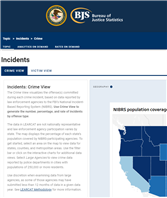BJA Crime Analysis on Demand Resources
The Bureau of Justice Assistance (BJA) recognizes the enormous benefit a healthy crime analysis capacity can bring to law enforcement agencies. To increase crime analysis capacity nationally, BJA funds guidance, training, and technical assistance designed to directly support and assist state, local, and tribal law enforcement agencies in increasing their crime analysis capacity.
Tactical Analytical Products
RISS analysts develop specialized analytical products for investigators and prosecutors to increase their ability to identify, detect, and apprehend suspects, as well as to enhance prosecutorial success in court. These products include highly complex and specialized flowcharts, link-analysis charts, crime scene diagrams, and telephone toll analysis reports, as well as financial analysis reports, computer forensic analyses, and audio/video enhancement services. Digital forensics focuses on the analysis and retrieval of information from computers and digital storage media. Digital forensics analysts uncover deleted files; locate evidence; evaluate the structure of computerized files; analyze other computer and cellular phone activity within hard drives, CD-ROMs, and JPEG images; and analyze e-mail seized during investigations. Audio and video enhancements have become extremely common inside the courtroom and serve as a finite way of assisting law enforcement and prosecutors in convicting criminals. The enhancement of audio bites or video footage assists law enforcement in identifying suspects. Audio enhancements are useful for undercover operations because analysts have the ability to remove background and frequency noise, enabling investigators to clearly identify the suspects. Analysts have the ability to enhance video footage in order to present a clear picture, which is extremely useful in robbery and burglary cases.
PSP Research Brief: Crime Analysis Considerations for Establishing or Enhancing Capacity
This document is intended as a reference resource for PSP site teams to help sites interested in implementing or enhancing a Crime Analysis Unit.
PSP Webinar: Social Network Analysis
Social network analysis (SNA) can be a useful tool for criminal investigations and police community efforts to reduce violent crime. Understanding how data is compiled and structured, how it may be utilized, and the limitations that it has is critical for leaders considering the use of SNA. This webinar outlined the concept of SNA and how this tool can be utilized to further crime-reduction strategies. Topics included visualizing a network and types of network data related to SNA, understanding group dynamics and the utilization of SNA in focused deterrence, SNA associated with hotspots as well as NIBIN linkages, and potential implementation challenges and legal considerations.
PSP Crime Analysis Assessment Summary
This document intends to provide an understanding of the common themes, technical gaps, and recommendations identified among PSP sites that have received crime analysis assessments.
Checklist to Assess Your Agency's Crime Analysis Capabilities
Law enforcement agencies and jurisdictions across the United States are increasingly recognizing the importance of using crime analysis to disrupt crime patterns in their communities. However, the question that many agencies face is, “Where do we start?” Agencies may look for outside help to address their crime analysis needs. The Bureau of Justice Assistance (BJA) National Training and Technical Assistance Center (NTTAC), for example, provides crime analysis training and technical assistance (TTA). However, while a third-party assessment of your unit may seem like the best first step, there are many practical steps that can be taken in-house that can help your agency move toward its crime analysis goals. In order to determine if you are ready to receive TTA, and to make sure it is customized for your specific needs, BJA NTTAC encourages reviewing the questions on the below checklist prior to requesting TTA.
New Law Enforcement Agency Reported Crime Analysis Tool (LEARCAT)
BJS has launched a new Law Enforcement Agency Reported Crime Analysis Tool (LEARCAT). It provides access to incident-based data on crimes recorded by law enforcement.






